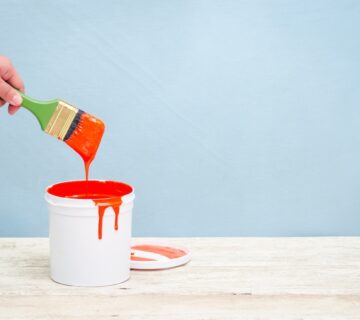Undertaking a house painting project can be both exciting and daunting, as it involves transforming your living space and enhancing its aesthetic appeal. One of the most crucial aspects of such a project is budgeting, which often becomes a significant source of stress for many homeowners. However, a well-planned budget not only ensures that the project proceeds smoothly but also helps in avoiding unexpected expenses that can disrupt your plans and strain your finances. This comprehensive guide aims to provide you with the necessary information and strategies to effectively budget for your house painting project, whether it’s a DIY endeavor or you’re hiring professionals.
Assessing the Scope of Your Project
Begin by carefully assessing the scope of your painting project to determine its scale and complexity. Are you planning to paint the entire house or just specific rooms? Will you be focusing on interior spaces, exterior surfaces, or both? Understanding the scope of the project is essential, as it directly influences the amount of paint needed, the type of paint required, and the extent of labor involved. By clearly defining the scope upfront, you can develop a more accurate and realistic budget that aligns with your goals and preferences.
Estimating Paint Costs
The cost of paint can vary significantly depending on factors such as quality, brand, and type. Higher-quality paints with specialized features, such as enhanced durability or eco-friendly formulations, typically command a higher price point but may offer better coverage and longevity. When estimating paint costs, calculate the amount of paint needed based on the square footage of the surfaces to be painted. A general rule of thumb is that one gallon of paint covers approximately 400 square feet, but this can vary depending on factors such as surface texture and application method. Additionally, don’t forget to factor in the cost of primer, especially if you’re working with new surfaces or making significant color changes, as primer helps improve paint adhesion and coverage.
Labor Costs
If you’re planning to hire professional painters for your project, labor costs will constitute a significant portion of your budget. To obtain an accurate estimate, it’s advisable to solicit multiple quotes from reputable painting contractors in your area. Professional painters typically charge either by the square footage of the area to be painted or by the hour, depending on the specifics of the project. Keep in mind that labor costs may vary based on factors such as the complexity of the project, the height of the ceilings, the condition of the walls, and any additional services required, such as surface preparation or repairs.
Additional Supplies and Equipment
For a DIY painting project, you’ll need to budget for additional supplies and equipment beyond just paint and labor. These may include essential painting tools such as brushes, rollers, painter’s tape, drop cloths, and sandpaper. Depending on the scope of your project, you may also need to invest in specialized equipment such as ladders or scaffolding, especially for painting high areas or exterior surfaces. Be sure to account for the cost of these supplies and equipment in your budget to avoid any last-minute surprises or delays during the project.
Preparatory Work
Proper preparation is crucial for achieving professional-looking results and ensuring the longevity of your paint job. This may involve tasks such as repairing holes or cracks in the walls, sanding rough areas to create a smooth surface, or removing old wallpaper or paint. If you’re hiring professional painters, inquire whether prep work is included in their quote or if it will incur additional charges. For a DIY project, be sure to factor in the cost of materials needed to complete these preparatory tasks, as neglecting them can compromise the quality and durability of the final finish.
Contingency Budget
It’s always wise to allocate a contingency budget as a buffer for unexpected expenses that may arise during the course of the project. A contingency budget typically ranges from 10% to 20% of your total estimated cost and can help cover unforeseen costs such as additional paint needed due to poor coverage, unexpected repairs or surface issues, or changes in project scope. By setting aside a contingency budget, you can better safeguard yourself against financial surprises and ensure that your project stays on track without causing undue stress or strain on your finances.
Potential Cost-Saving Measures
To maximize your budget and save money on your painting project, consider implementing cost-saving measures where possible. For example, you could save on labor costs by performing some of the prep work yourself, such as cleaning the walls or moving furniture out of the way. Choosing a simpler paint job or opting for a single color scheme throughout the house can also help reduce material costs and streamline the painting process. Additionally, purchasing paint and supplies in bulk or taking advantage of discounts or promotions can further lower your overall expenses. However, it’s essential to strike a balance between cost savings and quality, as opting for lower-quality materials or skipping essential prep work can ultimately result in subpar results and additional expenses down the line.
Final Thoughts
Budgeting for a house painting project requires careful consideration of various factors, including the scope of the project, paint and labor costs, additional supplies and equipment, preparatory work, and the allocation of a contingency budget for unexpected expenses. By taking the time to assess your project’s needs, obtain accurate cost estimates, and plan accordingly, you can ensure that your painting project proceeds smoothly and successfully without causing undue financial strain. Whether you’re tackling the project yourself or hiring professionals, a well-planned budget will help you achieve the desired results while staying within your financial means, allowing you to enjoy a refreshed and rejuvenated living space that you can be proud of for years to come. For more tips on house painting and budget planning, visit our website at sisupainting.com and explore our blog at sisupainting.com/blog.





No comment